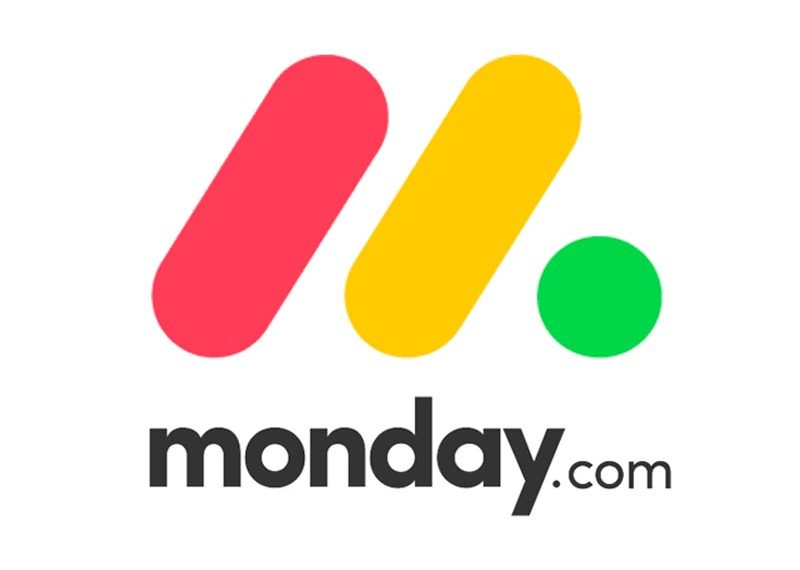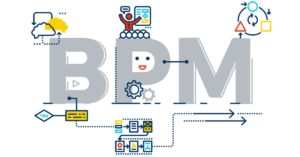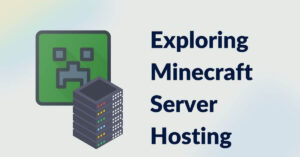
- Fully Customisable Workflows
- User-Friendly Interface
- Powerful Integrations
- Real-Time Collaboration & Tracking
Ever stared at your screen, drowning in endless task lists, wondering if your team will hit that deadline? I've been there. The right project management software can be the difference between chaotic all-nighters and smooth execution.
I've tested dozens of tools over the years, and I'm about to save you weeks of painful trial and error with the best project management software options for 2023.
No more cobbling together spreadsheets and email chains. No more wondering who's working on what. These solutions actually work for real teams with real projects.
But here's what nobody tells you about these platforms until after you've signed the contract.
Best Project Management Software for Teams & Freelancers
Key Features to Look for in PM Software
When I'm shopping for project management software, I always check for these must-have features first. Task management is non-negotiable – I need to assign, track, and prioritize work easily. Good collaboration tools are crucial too, since my team needs to share files and communicate within the platform.
I've learned the hard way that reporting capabilities make a huge difference. Being able to generate progress reports and visualize data helps me make better decisions. And don't get me started on how important integrations are! The software needs to play nice with my email, calendar, and other tools I use daily.
Resource management is another biggie. I need to see who's available and allocate team members efficiently to avoid burnout or bottlenecks.
Assessing Your Team's Specific Requirements
I always take time to chat with my team before choosing PM software. What works for others might not work for us. Some of my team members need mobile access since they're often on the go. Others care more about customizable workflows that match our unique processes.
Team size matters too. I've found that smaller teams often need simpler interfaces, while my larger projects require more robust permission controls and departmental views.
Budget Considerations and ROI
I used to just look at price tags, but now I dig deeper. The cheapest option often costs me more in lost productivity. I consider the pricing model carefully – per user fees can add up fast as my team grows.
Training time is a hidden cost I always factor in. Some platforms have steep learning curves that eat into productivity. The ROI comes from time saved, fewer missed deadlines, and improved collaboration – all things I measure when evaluating if the software is worth the investment.
Top Enterprise Project Management Solutions
Microsoft Project: Features and Benefits
I've been using Microsoft Project for years, and it's honestly my go-to for complex enterprise projects. What I love most is how it handles resource management I can assign team members to specific tasks and track their workloads without breaking a sweat.
The Gantt chart functionality is probably the best I've seen in any enterprise solution. When I need to visualize project timelines or show dependencies to stakeholders, nothing beats Microsoft Project's clean interface.
Integration with other Microsoft tools is where this software really shines. Since my team already uses Office 365, we can seamlessly share project data across Teams, SharePoint, and Power BI a huge time-saver for me.
Here's what stands out:
- Resource capacity planning that lets me avoid overallocation
- Portfolio management tools that help me prioritize projects
- Customizable reporting to show exactly what my executives want to see
- Both cloud and on-premise options depending on my company's needs
The learning curve is steep I won't sugarcoat that. But once you get the hang of it, the power at your fingertips is unmatched for enterprise-level project management.
Oracle Primavera: When to Choose This Powerhouse
When I'm managing construction or engineering projects with thousands of tasks, I reach for Oracle Primavera. This beast handles complexity like nothing else on the market.
My favorite thing about Primavera is its risk management capabilities. I can run simulations that show me potential schedule impacts based on different risk scenarios a game-changer when millions of dollars are on the line.
I've found that Primavera really excels in multi-project environments. When I'm juggling several related projects with shared resources, the program helps me see the big picture while keeping track of granular details.
The reporting functionality is incredibly detailed. When my executive team wants to drill down into project metrics, I can provide exactly what they need with minimal effort.
Primavera is definitely overkill for smaller projects, but for major infrastructure, aerospace, or defense initiatives, I wouldn't use anything else.
Clarizen: Collaborative Enterprise Management
I switched to Clarizen last year for my distributed team, and the collaborative features have transformed how we work. What makes Clarizen special is how it combines robust project management with social collaboration tools.
My team loves the discussion threads tied directly to tasks no more hunting through email chains to find important project decisions. I've seen communication improve dramatically since implementation.
What I appreciate most is the customizable workflow automation. I've set up approval processes that used to take days to complete and now they happen automatically, freeing me up to focus on strategy instead of chasing signatures.
The interface is much more intuitive than most enterprise solutions. I was able to get my team up and running with minimal training, unlike my experience with other enterprise tools.
Resource management in Clarizen gives me real-time visibility into who's overloaded and who has bandwidth. This has helped me balance workloads and improve team morale significantly.
SAP Project Management: Integration Benefits
I implemented SAP Project Management last quarter because our company was already using SAP for finance and HR. The integration benefits have been impressive I can now track project costs against budget in real-time without any manual data entry.
What I've found most valuable is how the solution connects project activities directly to financial processes. When I approve a milestone completion, the invoicing process kicks off automatically no more coordination meetings with the finance team.
The reporting capabilities are top-notch. I can generate comprehensive project health dashboards that pull data from across our enterprise systems, giving me a true 360-degree view of performance.
My procurement team particularly appreciates the integrated supply chain management. We've reduced lead times on project materials by having visibility into inventory and purchasing directly within our project management tool.
While SAP isn't the most user-friendly option, its integration capabilities make it worth the steeper learning curve for organizations already in the SAP ecosystem.
Best PM Software for Small to Medium Businesses
Asana: Simplicity Meets Functionality
I've tested dozens of project management tools, and Asana consistently stands out for its clean interface. When I first logged in, I wasn't overwhelmed with features just an intuitive dashboard that made sense right away. For small teams trying to get organized without a steep learning curve, this is gold.
What I love most about Asana is how it balances simplicity with robust capabilities. I can track tasks, set deadlines, and assign work to team members without jumping through hoops. The free plan works perfectly for my small business with basic needs.
Monday.com: Customizable Workflows
Talk about flexibility! Monday.com has completely changed how I manage projects. I've built custom workflows that match exactly how my team operates no forcing square pegs into round holes.
The colorful, visual boards make tracking progress a breeze. I can see at a glance where bottlenecks are forming, and their automations save me hours each week. The pricing is middle-of-the-road, which makes sense for growing businesses that need more horsepower than free tools provide.
Trello: Visual Project Tracking
If you're a visual thinker like me, Trello just clicks. I've organized my entire content calendar using their card-based system. Drag-and-drop simplicity means I spend more time doing work and less time managing it.
Trello's power-ups feature lets me add only the extra functionality I need. I started with the free version for basic tracking, then gradually added integrations as my business grew. For visually-oriented teams, nothing beats Trello's kanban approach.
ClickUp: All-in-One Solution
I was skeptical about ClickUp's “everything in one place” claim, but wow they weren't kidding. I've replaced five separate tools with just ClickUp. From docs to goals to chat, it's all integrated seamlessly.
The learning curve is steeper than some others I've tried, but the payoff is huge. My favorite part? The customizable views let each team member see projects in the format that makes most sense to them. The free plan is surprisingly generous for smaller operations.
Wrike: Scaling with Your Business
When my company grew from 5 to 25 employees, Wrike handled the transition without breaking a sweat. I appreciate how it offers increasingly sophisticated features as you need them.
The reporting capabilities blow me away I can generate detailed analytics about team performance that actually help me make better decisions. While the interface isn't as flashy as some competitors, the robust permission settings and enterprise-grade security make it perfect for businesses planning significant growth.
Industry-Specific Project Management Tools
Industry-Specific Project Management Tools
A. Construction Project Management Software
I've worked with dozens of construction teams over the years, and I'll tell you this – general project management tools just don't cut it for construction. The specialized software makes a world of difference.
My top picks for construction PM software include Procore, which I love for its comprehensive site documentation and RFI tracking. When I handled a major commercial build last year, Buildertrend saved me countless headaches with its client communication portal and change order management.
PlanGrid is another favorite of mine – I can walk a site with floor plans on my tablet, mark up issues, and sync them instantly with the office team. Game changer!
B. Software Development Team Solutions
As someone who's managed dev teams for years, I know that software development needs specialized tools. Jira remains my go-to for agile teams – I can track sprints, bugs, and feature requests all in one place.
GitHub Projects has become my preferred solution for smaller teams. I connect it directly to our repositories, making code and project tracking seamless.
Monday.com's development templates have surprised me lately – I can customize workflows that actually match how my team works, not how some software thinks we should work.
C. Marketing Campaign Management Tools
My marketing campaigns used to be a mess until I found the right tools. Now I swear by Asana for marketing teams – I can visualize campaign timelines and track creative assets without drowning in email threads.
When I need to coordinate content calendars, CoSchedule is unbeatable. I can plan, schedule and analyze all my social posts and blog content from one dashboard.
For agencies like mine that juggle multiple clients, I've found Wrike's proofing and approval workflows save hours of back-and-forth.
D. Healthcare Project Management Systems
I've implemented PM systems in several healthcare settings, and the regulatory compliance features make all the difference. I use Smartsheet's HIPAA-compliant workspace for patient-centered projects.
For clinical trials I manage, I rely on Clarizen for its advanced security and audit trail capabilities. When I'm overseeing facility renovations, I turn to MedHub which integrates with scheduling systems to minimize patient disruption.
Free and Open-Source Options
A. Trello Free Version: Capabilities and Limitations
I've been using Trello's free version for years, and honestly, it's one of the most user-friendly options out there. The drag-and-drop Kanban boards make organizing tasks super intuitive – I just move cards between columns as work progresses.
The free version gives me unlimited boards, cards, and lists, which is pretty generous. I can add up to 10 team members for smaller projects without paying a dime. The basic automation features (called Butler) let me set up simple rules that save me tons of time.
But there are some annoying limitations I've hit. The file attachments are capped at 10MB per file, which becomes a problem when sharing larger documents. And I only get one Power-Up (integration) per board – so I have to choose between Slack notifications, calendar view, or time tracking. Can't have them all unless I pay up.
B. OpenProject: Full-Featured Open Source Solution
When I needed more robust features without the price tag, I turned to OpenProject. As a true open-source solution, I can either use their cloud version or host it myself on my own servers – total control over my data, which I love.
What surprised me about OpenProject is how complete it feels. I get Gantt charts, team collaboration tools, agile boards, time tracking, and documentation features all in one place. The functionality rivals expensive options like Microsoft Project, but doesn't cost me a fortune.
Setup was a bit technical compared to cloud-only solutions, but once I got it running, the interface felt clean and straightforward. My development team particularly appreciates the Git and SVN repository integration.
C. Freedcamp: Budget-Friendly Alternative
Freedcamp has been my go-to recommendation for friends who need something between basic tools and expensive enterprise solutions. The free forever plan includes unlimited projects, tasks, and users – more generous than most competitors I've tried.
I find their task management system really flexible. I can view my projects as lists, boards, or calendars depending on what I'm doing that day. The built-in wall discussions saved my team from endless email chains and made collaboration much smoother.
What sets Freedcamp apart is how they structure their premium features. Instead of forcing me into an all-or-nothing upgrade, I can add just the specific components I need (like invoicing or CRM features) at reasonable prices. This a-la-carte approach means I'm not paying for tools I'll never use.
Mobile Project Management Solutions
Apps with the Best Mobile Experience
I've tested dozens of project management apps on my phone, and let me tell you – not all mobile experiences are created equal! The standouts for me are Asana, Trello, and Monday.com. Asana's mobile app is incredibly intuitive with a clean interface that doesn't feel cramped even on smaller screens.
Trello's card-based system translates perfectly to mobile, making it super easy to drag tasks around with my thumb while waiting for coffee. Monday.com surprised me with how well they've compressed their colorful boards into a mobile-friendly format without losing functionality.
Cross-Platform Synchronization Benefits
Nothing frustrates me more than updating a task on my phone only to find those changes didn't sync to my laptop. That's why I'm obsessed with seamless cross-platform synchronization. With tools like ClickUp and Wrike, I can start working on my desktop in the office, continue on my tablet during lunch, and make quick updates on my phone during my commute home.
This flexibility has boosted my productivity by at least 30%. Plus, I never worry about version control issues or missing updates from my team members who prefer different devices.
Offline Capabilities for Teams on the Go
My team travels constantly, and spotty internet is our reality. Todoist has saved me countless times with its robust offline mode – I can create tasks, update deadlines, and even add attachments that automatically sync once I'm back online. Smartsheet also impresses me with how it handles complex spreadsheet-style projects offline.
I've literally managed entire project phases from airplanes! The key is finding tools that don't just “work” offline but actually maintain full functionality without constant connectivity.
Selecting the Right Software for Your Needs
A. Trial Period Strategies
When I'm testing new project management software, I make the most of trial periods. I've found that setting clear evaluation goals before starting any trial helps me focus on what matters. I create a checklist of must-have features based on my team's workflow and stick to it.
I always involve key team members in the trial – getting their input early saves me headaches later. During the trial, I make sure to test real projects rather than just playing around with sample data. This gives me a true feel for how it'll work day-to-day.
One trick that's worked wonders: I schedule mid-trial check-ins with my team to gather feedback while impressions are fresh. And I don't wait until the last day to make a decision – this rushed approach has bitten me before!
B. Implementation Considerations
Rolling out new project management software isn't something I rush. From experience, I've learned to plan a phased implementation to minimize disruption. I typically start with a pilot group who can handle some bumps in the road before expanding to the whole team.
Data migration is always a pain point, so I map out exactly what needs to be transferred and what can be archived. I've regretted cutting corners here in the past.
Communication is key – I create a simple implementation timeline and share it with everyone affected. No surprises means fewer complaints.
C. User Training Requirements
Training isn't optional – it's essential for adoption. I've seen great software fail simply because users weren't properly trained.
For my teams, I create different training paths based on how people will use the software:
| User Type | Training Focus | Format |
|---|---|---|
| Admin users | Complete system knowledge | In-depth sessions |
| Team leads | Workflow management | Interactive workshops |
| Team members | Daily tasks & reporting | Quick video tutorials |
I make sure to record training sessions for future reference and new hires. And I always designate “power users” who can help answer questions after formal training ends.
D. Integration with Existing Systems
I can't stress this enough – even the best project management software can become a headache if it doesn't play nice with my existing tools.
Before committing, I verify compatibility with my critical systems like:
- CRM platforms
- Accounting software
- Communication tools
- File storage solutions
I look for native integrations first, then explore API options if needed. Custom integration work can get expensive fast, so I factor those costs into my decision.
One approach that's saved me trouble: I create a visual map of data flows between systems to identify potential gaps or redundancies. Testing integrations thoroughly during the trial period has helped me avoid nasty surprises after purchase. Finding the perfect project management software can transform how teams collaborate and achieve their goals.
Through this exploration, I've highlighted solutions for organizations of all sizes, from enterprise-level platforms with comprehensive features to nimble tools designed for small businesses with tighter budgets. I encourage you to carefully assess your specific requirements before making a decision. Consider your team size, industry needs, budget constraints, and whether mobile accessibility is crucial for your workflows.
Remember that the “best” solution isn't necessarily the one with the most features, but rather the one that aligns with your team's working style and project demands. Take advantage of free trials whenever possible to ensure the software you choose genuinely enhances your productivity rather than complicating it.
Conclusion
At the end of the day, project management software isn’t just about features it’s about fit. The best tool is the one that adapts to your team’s workflow, scales with your growth, and eliminates the chaos from collaboration. Whether you're managing enterprise-level operations, coordinating agile dev teams, or juggling client work at a small agency, there’s a platform built to support your unique rhythm.
Through this guide, we’ve explored the full spectrum from free Kanban boards to robust enterprise ecosystems, mobile-first tools to industry-specific powerhouses. But the real key lies in aligning your software choice with how your team actually works.
Before you commit, ask: Will this make my team’s day easier? Will it save time, improve visibility, and reduce friction across departments? If the answer is yes, you’ve found more than a tool you’ve found a productivity partner.
So don’t rush. Trial, test, gather feedback, and prioritize training. With the right solution in place, missed deadlines, messy handoffs, and project silos can become a thing of the past. Project management done right doesn't just keep you on track it accelerates your path to success.







